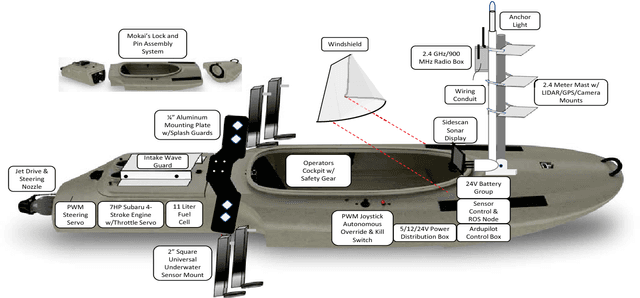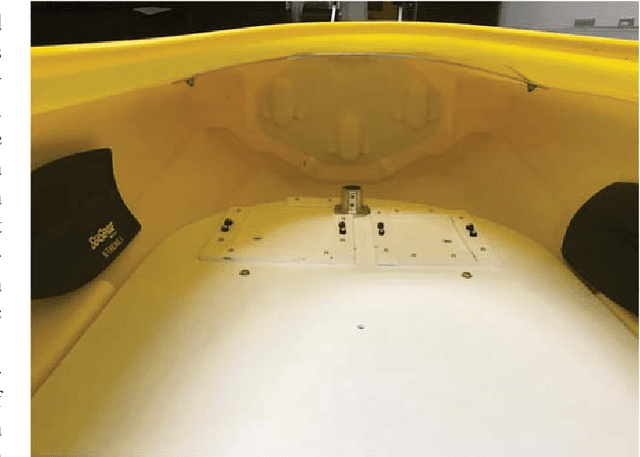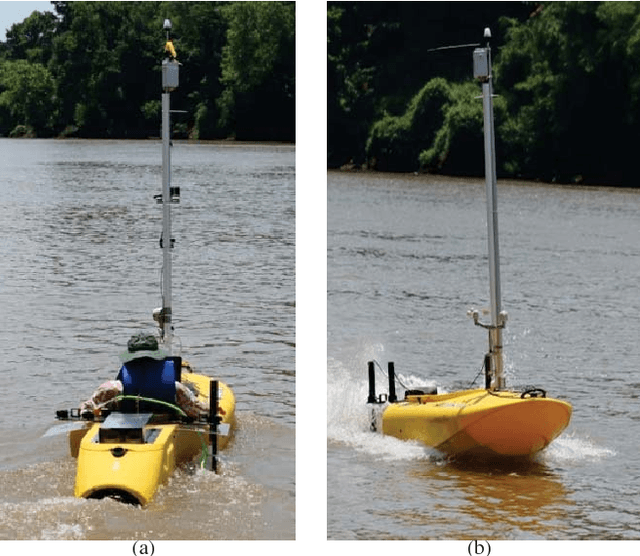Chris McKinney
An Autonomous Surface Vehicle for Long Term Operations
Aug 27, 2018



Abstract:Environmental monitoring of marine environments presents several challenges: the harshness of the environment, the often remote location, and most importantly, the vast area it covers. Manual operations are time consuming, often dangerous, and labor intensive. Operations from oceanographic vessels are costly and limited to open seas and generally deeper bodies of water. In addition, with lake, river, and ocean shoreline being a finite resource, waterfront property presents an ever increasing valued commodity, requiring exploration and continued monitoring of remote waterways. In order to efficiently explore and monitor currently known marine environments as well as reach and explore remote areas of interest, we present a design of an autonomous surface vehicle (ASV) with the power to cover large areas, the payload capacity to carry sufficient power and sensor equipment, and enough fuel to remain on task for extended periods. An analysis of the design and a discussion on lessons learned during deployments is presented in this paper.
Efficient Multi-Robot Coverage of a Known Environment
Aug 07, 2018



Abstract:This paper addresses the complete area coverage problem of a known environment by multiple-robots. Complete area coverage is the problem of moving an end-effector over all available space while avoiding existing obstacles. In such tasks, using multiple robots can increase the efficiency of the area coverage in terms of minimizing the operational time and increase the robustness in the face of robot attrition. Unfortunately, the problem of finding an optimal solution for such an area coverage problem with multiple robots is known to be NP-complete. In this paper we present two approximation heuristics for solving the multi-robot coverage problem. The first solution presented is a direct extension of an efficient single robot area coverage algorithm, based on an exact cellular decomposition. The second algorithm is a greedy approach that divides the area into equal regions and applies an efficient single-robot coverage algorithm to each region. We present experimental results for two algorithms. Results indicate that our approaches provide good coverage distribution between robots and minimize the workload per robot, meanwhile ensuring complete coverage of the area.
 Add to Chrome
Add to Chrome Add to Firefox
Add to Firefox Add to Edge
Add to Edge